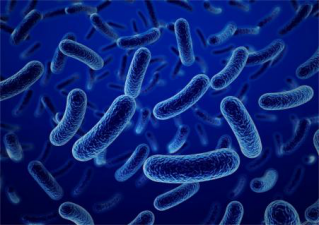In the Hebei Province, due to the warm winter and abnormal climate this year, broilers often suffer from diarrhea during the breeding process. There is a large amount of undigested feed in the feces, the feed intake is reduced, the spirit is depressed, the growth is slow, the dehydration is dehydration, and the feed reward is reduced. Some casualties. The author analyzes this general phenomenon for the reference of the majority of people in the industry and breeding friends.
Clinical symptoms
The disease mostly occurred in 30 days to 40 days of age, and the weight of chickens increased rapidly. A large group of chickens are pale, individual shrinking, depressed in spirit, with a segregated group, loss of appetite ranging from 10% to 30%, increased desire to drink, row of yellow or gray, white dilute feces; severe cases of watery diarrhea, large amounts of feces Digested feed, there is a certain smell in the chicken house. Some chickens were very excited and ran wild and then died in small quantities.
Pathological changes
The necropsy found that the feathers around the anus were stained with white or gray or yellow feces, loose feathers, chills, and anorexia. The chest muscles and leg muscles have dark red strips of hemorrhage, atrophy and dehydration, hepatosplenomegaly, hemorrhage, hepatic parenchyma brittle and fragile, enlarged and pale kidneys, and some are typical "Plasma kidneys". The renal tubules are full of urate; The main lesions were in the digestive system, with changes in the bursa of Fabricius being particularly prominent. On the 2nd to 4th day after onset, the volume of Bursa's bursa was 2 to 3 times larger, yellow jelly-like edema, hard quality, covered with creamy cellulose-like exudates on the mucosa, and rapidly shrinking after 5 days; intestinal lesions It is also evident that the intestinal mucosa of the early duodenum was thickened and pale gray before the yolk pedicle, which was like a layer of bran peeling easily and the intestines were empty. In the middle and late period, the intestinal wall was thin, and the intestinal mucosa was peeled off. The contents were egg white-like. In severe cases, the entire intestinal mucosa fell off and disintegrated. The contents were blood-colored egg white samples, such as persimmon-like, mucosal bleeding at the junction of individual glands and stomach.
diagnostic result
Based on clinical symptoms, pathological changes, and epidemiology, a preliminary diagnosis of enteropathic complications in infectious bursal sac was made.
Treatment measures
Take 1000 chickens as an example. Pulsatilla chinensis scattered 200 g/day + Expedition Yuan Lan Lan Qi Kang (mainly composed of Radix Isatidis, Radix Astragali, Epimedium, etc.) 200 g/day, concentrated once in the morning, and used once every 3 to 5 days; kidney swelling and ascites (mainly Ingredients: 11 kinds of traditional Chinese medicines such as Fangji, Astragalus, Chinese Wolfberry, Magnolia, Cinnamon, etc.) 750g/day + expedition Intestinal Litai 200g/day + Vk3 powder 100g/day, concentrate drinking once in the afternoon and use it for 3 to 5 days.
Efficacy
After a small amount of injuries and deaths after 5 days of treatment, the large group of spirits returned to normal, the feed intake basically returned to normal, and the stools returned to normal. The farmers were very satisfied with the curative effect.
analysis
1. Coccidiosis is the cause of the disease in this group.
2. The bursa of Fabricius is the main cause of the disease. Infectious bursal disease is an immunosuppressive disease with a flock mortality of 30% to 40%. Although immunization with IBD attenuated vaccines controls the widespread epidemic of the disease in most chicken farms, In the chicken farm with a history of this disease, although each batch of chickens was vaccinated with attenuated vaccines, the disease still occurred. Now we use the diseased chicken farms Fabrication of inactivated oil emulsion vaccine, immunization of chickens, each batch of chickens have achieved a good control effect.
After the onset of the flock, it must be diagnosed early, adopt comprehensive prevention and control measures, and treat the disease symptomatically in order to quickly control and reduce economic losses.
All water based products have plenty of nutrients and water to support microbe growth under favorable conditions. Microbes invade water based products from multi-point sources, such as contaminated raw materials, poor plant hygiene, untreated water, and not properly preserved recycling materials. While adding in-can preservatives into the products should not excuse a factory from Good Manufacturing Hygiene Practices (GMHP), proper use of in-can preservatives coupled with GMHP can dramatically minimize the chance of microbial tolerance development, and assure unspoiled products to customers.
Biocides formulators often use several types of in-can preservatives as active ingredients in their biocidal products for various industrial water based products. One of these active ingredients is benzisothiazolone (BIT). It has several distinct performance advantages, including good stability at high pH, good stability in the presence of reducing agents, and broad spectrum of activities against many microbes.Sunshine Biotech supplies to all industrial biocides formulators with high quality BIT technical ingredients. Besides of BIT, we also provide its derivative, like BBIT, MBIT etc.


Biocide Technical Ingredients
Biocide Technical Ingredients,Biocide Formula,Biocide Ingredients,Biocide Liquid
Nanjing Sunshine Biotech Co., Ltd , http://www.sunshine-bio.com